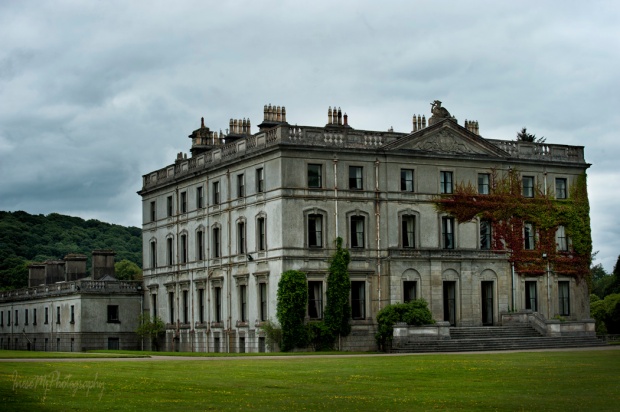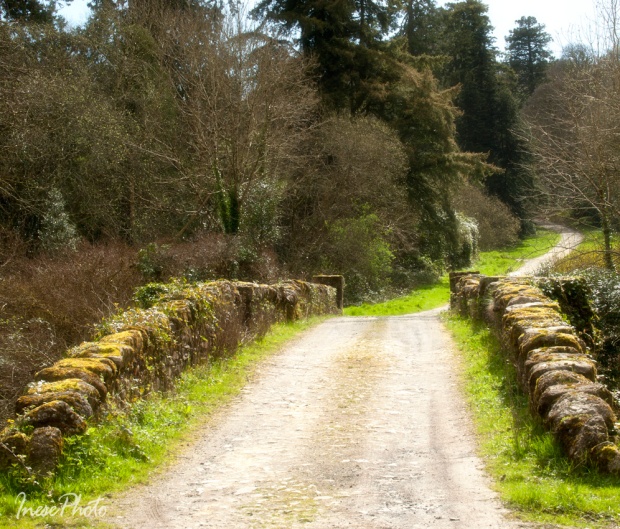After having seen Mother Brown we are going to walk straight to the place she is looking at – the Curraghmore House.
This July I visited Curraghmore House hoping to see a portrait of Lady Florence. Unfortunately they don’t have her portraits in the house. Otherwise, it was an amazing visit. If you go to Ireland, make sure you contact the tour guides and book yourself a €15 tour of the main reception rooms, Shell House and the garden. I promise you, it will be the highlight of your visit.
I do my best to remember everything that our guide is telling. Photography is not allowed in the House, and for the same reason I can not give you a detailed account on what I have seen, but I still can share some stories. Like the story of the Stag and the Dragon.
Curraghmore House was built by the la Poer family after their arrival in Ireland with the Norman invasion in the 12th century. It was a tower house with thick walls, and its facade was adorned with the family crest they brought from Normandy – a sculpture of a St Hubert Stag with genuine antlers, and the crucifix. Later a new house was built around the original tower, and a new stag sculpture carved by Sir Richard Boehm.
In 1701 a girl was born, Catherine, the only child of James Power, 3rd Earl of Tyrone and his wife Anne Rickard. The Earl soon died and left her all the family lands. The Earldom discontinued and her father’s cousin was supposed to move in the house and inherit the Barony, but it came out that he was a Jacobite, and Catherine and her mother were allowed to stay for a while to deal with them later. They stayed in the house until Catherine was fifteen and then the marriage was arranged with her cousin Sir Marcus Beresford, a Protestant, Freemason and politician. He became the man of the house. They got married exactly 300 years ago, on July 16 1717.
Lady Catherine gave birth to 15 children 9 of whom reached adulthood. Their firstborn, George, was made the first Marques of Waterford.
Sir Marcus wanted a bigger house and Catherine knew that he would eventually remove the la Poer family crest and replace it with the Beresford family crest, a Dragon head pierced through the neck with a broken spear. She convinced her husband to rebuild the house so that the front faced Comeragh Mountains, and it was where the Dragon was placed. Until these days, the guests arrive to the front of the house, which is in the back, and both the Dragon and the Stag are still here, standing back to back. But it is not the whole story.
In 1922, during the Civil War, the order was given for this house to be burned. Some men came in the middle of the night, put the straw and left to return before the sunrise and finish the job. When they came back with the torches, the clouds suddenly parted, a full moon came out and the crucifix had cast a shadow on the ground. The men were terrified that they almost burned a Catholic house. They hurried away, and burned the Woodstock House shortly after.
View of the Comeragh Mountains from the front porch.
Statues in the courtyard.
In these apartments there used to be a doctor’s surgery and a teacher’s quarters.
Retired butler still lives here.
The Stables.
Tea Rooms.
Next weekend we resume our walk around the Curraghmore House.
 Have a wonderful week!
Have a wonderful week!







































 Have a wonderful weekend!
Have a wonderful weekend!















 Have a wonderful weekend!
Have a wonderful weekend!